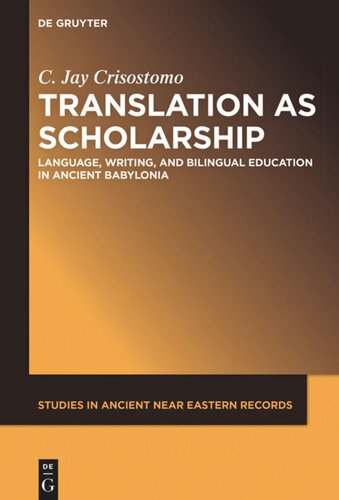

Most ebook files are in PDF format, so you can easily read them using various software such as Foxit Reader or directly on the Google Chrome browser.
Some ebook files are released by publishers in other formats such as .awz, .mobi, .epub, .fb2, etc. You may need to install specific software to read these formats on mobile/PC, such as Calibre.
Please read the tutorial at this link: https://ebookbell.com/faq
We offer FREE conversion to the popular formats you request; however, this may take some time. Therefore, right after payment, please email us, and we will try to provide the service as quickly as possible.
For some exceptional file formats or broken links (if any), please refrain from opening any disputes. Instead, email us first, and we will try to assist within a maximum of 6 hours.
EbookBell Team

4.0
56 reviewsIn the first half of the 2d millennium BCE, translation occasionally depicted semantically incongruous correspondences. Such cases reflect ancient scribes substantiating their virtuosity with cuneiform writing by capitalizing on phonologic, graphemic, semantic, and other resemblances in the interlingual space. These scholar–scribes employed an essential scribal practice, analogical hermeneutics, an interpretative activity grounded in analogical reasoning and empowered by the potentiality of the cuneiform script. Scribal education systematized such practices, allowing scribes to utilize these habits in copying compositions and creating translations.
In scribal education, analogical hermeneutics is exemplified in the word list "Izi", both in its structure and in its occasional bilingualism. By examining "Izi" as a product of the social field of scribal education, this book argues that scribes used analogical hermeneutics to cultivate their craft and establish themselves as knowledgeable scribes. Within a linguistic epistemology of cuneiform scribal culture, translation is a tool in the hands of a knowledgeable scholar.